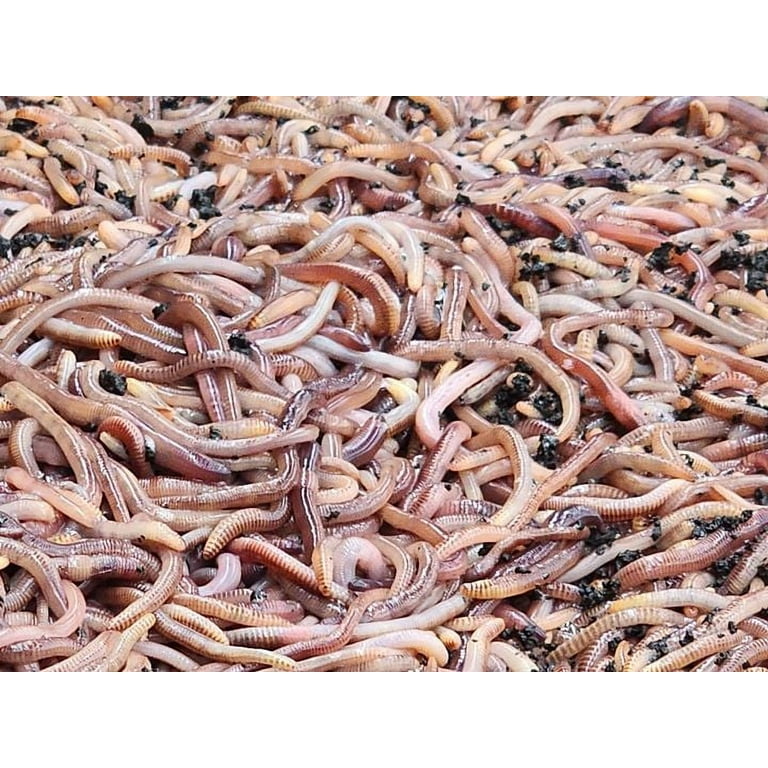The Duty of Red Wigglers in Lasting Gardening
The combination of red wigglers right into sustainable gardening techniques supplies a compelling method to improving dirt wellness and reducing natural waste. These microorganisms not just transform kitchen scraps into nutrient-dense compost with vermicomposting yet also freshen the soil, advertising ideal problems for plant development. As they damage down complicated natural products, they actively cultivate a thriving microbial ecosystem important for sustainable agriculture. Nevertheless, the ramifications of making use of red wigglers expand past plain composting; their duty in forming a much more sustainable future warrants a deeper expedition of their advantages and functional applications.
Understanding Red Wigglers
Red wigglers, medically called Eisenia fetida, are a species of earthworm renowned for their duty in sustainable horticulture and composting techniques - red wigglers. These worms prosper in disintegrating raw material, making them particularly reliable in converting cooking area scraps and lawn waste into nutrient-rich garden compost. Unlike typical earthworms, red wigglers have a higher resistance for varying moisture degrees and can prosper in settings with abundant natural product
The environment choices of red wigglers include moist, dark settings abundant in organic material, such as compost containers or worm farms. Their environmental role expands beyond composting; they are essential in freshening the dirt and promoting nutrition cycling, which inevitably adds to healthier yard environments. red wigglers. Understanding the biology and behavior of red wigglers is essential for those looking for to execute effective vermicomposting in lasting gardening
Advantages of Vermicomposting
Vermicomposting offers many advantages that improve sustainable gardening techniques and contribute to ecological health. Among the primary benefits is the transformation of natural waste right into nutrient-rich compost, which boosts soil framework and fertility. The spreadings created by red wigglers are loaded with helpful microbes and important nutrients, making them a superb natural plant food.
In addition, vermicomposting considerably minimizes landfill waste. By drawing away cooking area scraps and yard waste from garbage dumps, this technique not only reduces methane exhausts-- a powerful greenhouse gas-- yet also promotes a round economy, where waste is repurposed as a resource.
One more benefit is the improvement of dirt aeration and water drainage (red wigglers). The burrowing task of red wigglers creates channels in the soil, enabling air and water to permeate even more conveniently, thus promoting a much healthier origin system for plants
In addition, vermicomposting can be done on a small scale, making it available for metropolitan gardeners and those with restricted room. This method encourages environmental stewardship and awareness, as individuals become much more engaged with their waste management methods. Inevitably, vermicomposting stands for a lasting, effective, and green approach to horticulture that profits both plants and the earth.
Exactly How to Begin Vermicomposting
Starting your very own vermicomposting system can be a satisfying venture that improves your sustainable gardening techniques. To start, have a peek at this site choose a proper container, such as a plastic bin or wooden box, with excellent drainage and ventilation. The dimension will certainly depend upon the volume of kitchen scraps you create; a container of 10-14 gallons normally is sufficient for a home.
Next, prepare the bed linens product. Shredded newspaper, cardboard, and coconut coir are excellent alternatives, supplying a comfortable environment for the red wigglers. Go for a bedding deepness of regarding 4-6 inches, which should be wet however not soggy.
When the bedding is developed, introduce your worms. Red wigglers (Eisenia fetida) are one of the most appropriate for composting. Start with around one pound of worms for every single 2-3 pounds of kitchen scraps weekly.
Begin including cooking area waste, preventing meat, dairy, and oily foods, as these can bring in insects and develop odors. Routinely check the bin's dampness degrees and temperature, guaranteeing it remains within the suitable range for worm task. With these initial steps, you'll be well on your means to developing nutrient-rich compost for your yard.
Maintaining a Healthy Worm Container
A thriving worm bin calls for consistent care and attention to keep an optimal environment for the red wigglers. Secret variables to keep track of consist of dampness degrees, temperature level, and food supply. Maintaining a wetness degree comparable to a wrung-out sponge is crucial; excessive water can cause anaerobic problems, while inadequate can dehydrate the worms.
Temperature is likewise important, as red wigglers grow in a range of 55 to 77 degrees Fahrenheit. Extreme temperatures can worry the worms, potentially causing mortality. Placing the container in a climate-controlled location or utilizing protecting products can assist control temperature fluctuations.

Finally, oygenation is important. Frequently turning the bed linens and utilizing a fork or shovel can protect against compaction and promote air movement, guaranteeing a healthy and balanced, thriving atmosphere for the red wigglers. By adhering to these techniques, gardeners can preserve an effective worm bin that sustains lasting horticulture efforts.
Effect On Soil Wellness
Enhancing dirt wellness through the usage of red wigglers is a fundamental aspect of sustainable gardening. By consuming natural matter, red wigglers break down complex materials right into simpler substances, a procedure recognized as vermicomposting.


Final Thought
In conclusion, red wigglers significantly contribute to lasting horticulture with their effective vermicomposting methods. By advertising waste reduction and fostering a round economic situation, red wigglers arise as vital components in environmentally friendly horticulture campaigns, highlighting their crucial function in environmental sustainability.
Comments on “Active red wigglers: Enhance soil naturally”